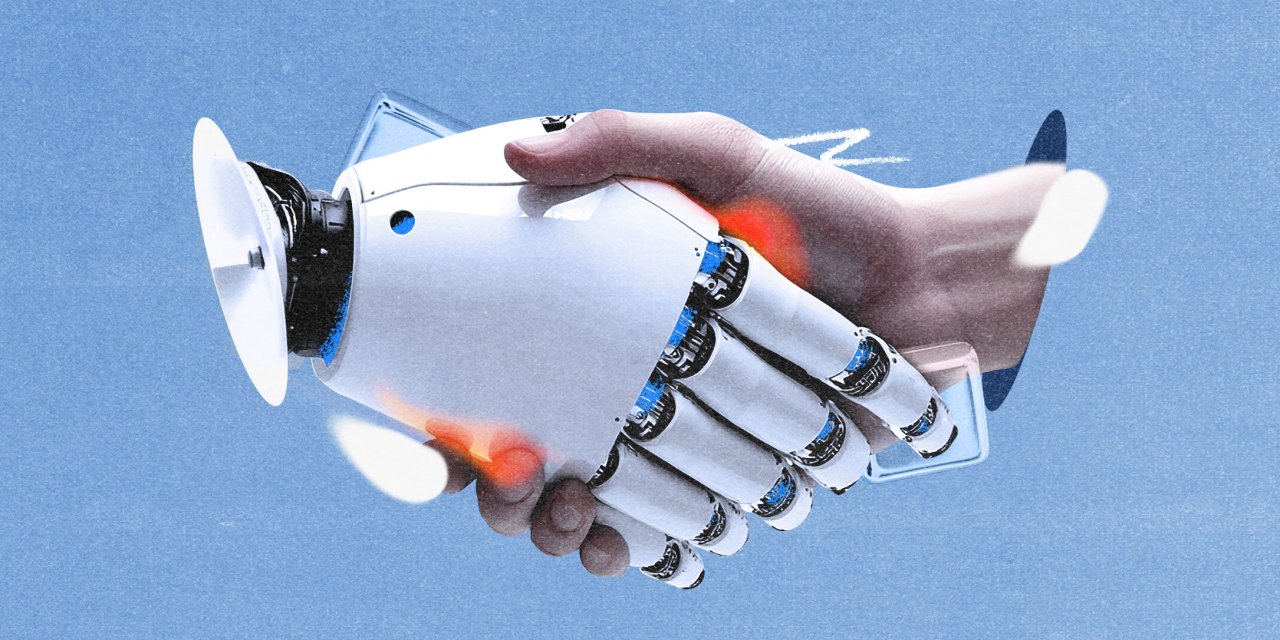Why employees are so secretive about using AI at work — and why they shouldn’t be

The AI revolution is happening at work whether people admit it or not. While leadership teams debate AI policies, employees are already using these tools, often in secret — and that can create an organizational blind spot that undermines innovation and oversight.
That’s the word from Justin Hale, master trainer at the professional training and consulting company Crucial Learning, who maintains that the problem isn’t that employees are using AI — it’s that they are afraid to talk about it. Leaders “need to go in thinking, I’m just going into the conversation expecting there’s going to be people that are fearful or unsure or uneasy, and so I need to double down on my invitation, my curiosity, my openness,” he said.
When employees use AI in stealth mode, they miss an important opportunity for professional development, he argues. “There is a risk that if people overuse AI for too many of their tasks, they outsource things that actually are muscles they should be working out themselves,” he said.
Furthermore, covert AI usage can erode team collaboration. “People start saying, well, rather than me asking people’s opinion on my team, I’m just going to ask AI,” he said. “And so now what happens is, we don’t have a collaborative team — we have a team of individuals all working collaboratively with AI.”
Other workplace experts point to the benefits. “Let’s be honest: employees aren’t hiding their AI use because they’re trying to get away with something — they’re hiding it because they’re trying to get ahead without getting in trouble,” said David Torosyan, who heads HR and payroll for J&Y Law Firm in Los Angeles.
Torosyan has seen firsthand how AI has become more woven into the modern workplace — and how it has become a key tool in employee productivity. “People are using it to write faster, organize smarter and communicate clearer,” he said. “They’re solving problems in real time with tools that didn’t exist a few years ago. But they’re doing it quietly, often in the shadows — not because they lack ethics, but because they lack clarity and psychological safety.”
That’s on leadership, he maintains. “If we don’t create a culture where innovation is welcomed, employees will innovate anyway — just without us,” he said. “That’s how we lose visibility, oversight and trust.”
ZipRecruiter career expert Sam DeMase likewise puts the onus on management.
“Leadership has a responsibility to craft policies around practical and ethical AI usage on the job and communicate those policies with their team,” she said. “Leadership should share examples of practical ways to use AI and shine a light on areas where AI should not be used. This transparency takes away the fear and shame that some employees associate with using AI on the job. The reality is, AI is becoming increasingly prevalent and, when used effectively, can boost productivity and free up employees’ time for innovative thinking.”
For his part, Hale suggests a “facts-story-ask” framework: Start with objective observations about industry AI trends, then share your perspective and intentions and, finally, ask genuinely open questions.
The approach requires striking a delicate balance between oversight and innovation. Seeing that, he recommends using contrasting statements to clarify your intentions. “What I’m not saying is I want you guys to hold back because you’re afraid you’re going to get in trouble,” he said. “What I am saying is, let’s be honest so we can both see the opportunities and see the risks.”
The challenge for HR leaders is helping employees understand which tasks are appropriate for AI assistance and which require human judgment.
Administrative work might be perfect for AI support, but strategic thinking and creative problem-solving remain the domain of humans, Hale stresses. “When I asked you to write up a thought piece around this topic, I actually want you to come up with your ideas because you have experience, you have stories, you have examples that are unique to you — I don’t want you to outsource it to AI,” he said.
For organizations ready to make such a cultural shift, Hale emphasizes setting measurable outcomes rather than vague aspirations. Instead of saying merely you want to adopt AI in workflows, define specific goals with clear timelines and success metrics.
Perhaps most importantly, leaders themselves need education. “Outside of organizations where AI is part of their business, I would say [leadership AI knowledge] is still very rudimentary,” he said. His recommendation: executives should be reading one article daily about AI in the workplace.
The most effective approach frames AI adoption as a collaborative project rather than a top-down mandate. “Framing it as a ‘we’ problem and making it a project together … shows a lot more loyalty, a lot more connection, a lot more collaboration on the leader’s part,” he said.
When leaders position AI discussions as partnership rather than scrutiny, they create psychological safety. As Hale puts it, “Your job is to suck fear out of the air so that people feel like they could bring up any question, any concern.”


